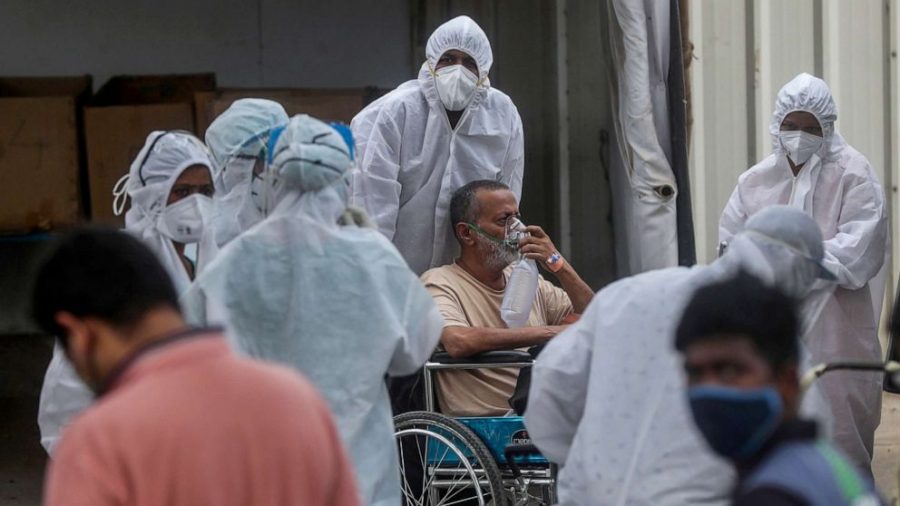India Faces Devastating COVID Crisis and Oxygen Shortage
May 3, 2021
India is in the midst of a humanitarian crisis as COVID-19 cases continue to rise and break global records, causing widespread shortages in oxygen, basic medical supplies, and available hospital care.
“The situation here is pretty dire, especially in the urban cities,” said Riya Kachroo, a Wayne Hills sophomore who is currently in India. “From what I’ve seen because of the density of the population, the situation has escalated. There’s a shortage of vaccines as well as oxygen but medical, political and corporate India have come together and are working towards the best solution to aid 1.3 billion Indians at this time.”
The country reported 380,000 new infections on April 29, setting a world record for the most cases recorded in a single day since the pandemic began.
Due to the severity of this second wave, hospitals have been suffering extreme shortages, unable to supply patients with the necessary oxygen and assistance to keep them alive.
Just last week, 20 patients died at a hospital in Delhi because of delayed oxygen deliveries. Days later, 22 critically ill patients died at a hospital in western India when an oxygen tank ruptured.
With nearly 1 million cases every 3 days, the recent surge has not only overwhelmed the nation’s healthcare system, but also its crematorium services.
Cremation is an essential part of Hindu funeral rites, maintaining that in order to be reincarnated, the body must first be destroyed.
Considering that nearly 80 percent of India’s population is Hindu, facilities have been running out of space and struggling to keep up with the rising death toll. As a result, makeshift centers have been conducting mass cremations in an attempt to help manage the crisis.
To put this in perspective, Delhi’s facilities alone have been cremating more than 600 bodies daily for the past week, according to the mayor of the North Delhi Municipal Corporation.
“No one in Delhi would have ever witnessed such a scene,” expressed Jitender Singh Shunty, the leader of a non-profit medical organization. “Children who were 5 years old, 15 years old, 25 years old are being cremated. Newlyweds are being cremated.”
India’s government has been scrambling to take action in an attempt to contain the outbreak, shutting down businesses and imposing new restrictions.
Prime Minister Narendra Modi has also approved the transportation of 100,000 portable oxygen concentrators and the creation of hundreds of new oxygen generation plants.
As India continues to call for international aid, countries around the world have been sending in supplies such as oxygen cylinders, ventilators, and medication.
The White House said it would begin sending more supplies to India on Sunday, including ventilators, test kits, and protective equipment.
“Just as India sent assistance to the United States as our hospitals were strained early in the pandemic, we are determined to help India in its time of need,” President Joe Biden tweeted.
Although efforts are being made, it is going to take time to distribute these supplies and actually build the oxygen plants, and cities like New Delhi are desperate for immediate help.
Possibly the most unsettling aspect of this second wave is that data from the government’s Covid-19 force suggests that the virus is hitting younger people, and even children, in a way that it did not before.
Since researchers are still struggling to find answers, the cause of this change has not yet been confirmed, however, it could potentially be linked to new variants detected within the virus.






